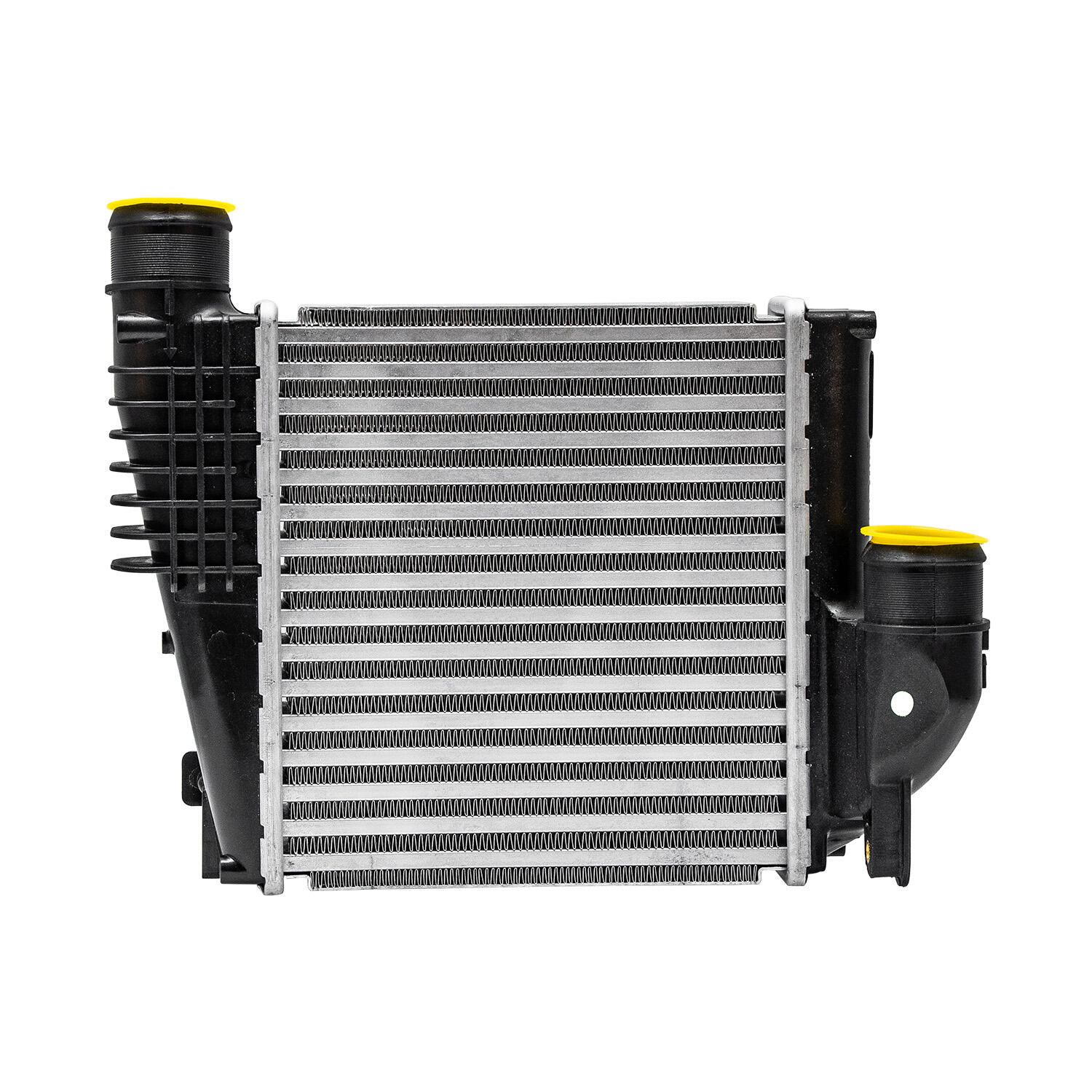Introduction
Inter-coolers are crucial parts of forced induction systems to cool compressed air coming from turbochargers or superchargers prior to entering the engine. By cooling the intake charge, this process makes the air denser so more fuel can combust, thus producing a greater power output. The two most common inter-cooler designs are the tube-and-fin and bar-plate. There are pros and cons of each, affecting performance, longevity, and cost.
Understanding inter-coolers
The inter-coolers work on the principle of heat exchanges where the hot compressed air is cooled by either ambient air (air-to-air inter-coolers) or a liquid coolant (air-to-water inter-coolers). Also, the efficiency of this process has to be controlled in order to avoid non-ideal phenomena such as detonation that can ruin an engine.
Design of inter-cooler using Tube-and-Fin
Of the inter-cooler designs, the tube-and-fin is one of the more traditional and ancient configurations. Basically, it is a set of tube rows that hot air passes through while fins attached to tubes increase the surface area which helps to dissipate heat. The inner tubing and fins are often made of aluminum, as the low weight combined with good thermal conductivity make it ideal for this Application.
Its simple design allows tube-and-fin inter-coolers to be manufactured and repaired quickly and affordably. We are aware that it is not as efficient when it comes to heat exchange compared to new-age designs and also, the fins can be fragile making them more susceptible to damage.
Bar and plate inter-cooler design
Another design is the bar-and-plate configuration, which is more contemporary and consists of flat bars with plates in between to form a compact core for heat exchanges. This design creates more surface area in a smaller footprint to allow for better heat dispersion. For example, they are usually made of aluminum and other metals for strength and thermal properties.
The most notable is the advantages of a higher efficiency in heat exchange, more sturdiness, and durability since it has an advantage against damage. Its complicated construction, however, can make it more cost prohibitive to build as well as repair.
Comparison of Heat Exchange Efficiency
As far as the heat exchange efficiency between both styles, as a rule the bar-and-plate inter-cooler is superior to the tube-and-fin configuration. Because it's a more compact unit with a much larger surface area, it provides improved heat transfer. This translates into cooler intake air temps and possibly more power in the real world.
Durability & Maintenance Requirements
Another aspect of inter-cooler was how durable it actually is. Darker bar-and-plate construction is not as easily harmed by foreign debris or physical blow. Maintenance on either design is routine cleaning to maintain airflow, although the more compact nature of the bar-and-plate design can make fully cleaning them a little more difficult.
Size and Space Constraints
The design of an inter-cooler will also influence its dimensions and the installation area. The compact nature of this bar-and-plate design allows for better fitment to various vehicles, particularly in performance applications where packaging space is limited. However, the larger tube-and-fin design might be more appropriate for use in situations where space is a secondary consideration.
Cost Implications
It goes without saying that used parts should be budgeted for when you're selecting an inter-cooler. A tube-and-fin design is typically more affordable since it doesn't involve as much tooling and can be a common choice for the cost-conscious shopper. But for enthusiasts who are demanding the most performance, the increased cost may be well worth it for the added performance and durability inherent to a bar-and-plate design.
Across Environments Performance
The inter-coolers themselves in both designs need to work effectively in any conditions. Due to the efficiency of the bar-and-plate design it is especially suited for high-performance applications and extreme temperatures. The tube-and-fin construction is dependable, but it doesn't perform as well under extreme operating circumstances.
Install and Compatible
Easily fits in the rear of your vehicle with limited modifications involved; Compatible with stock systems already present in the motor. The compactness of a bar-and-plate design can allow for easier packaging within tight engine bays, but tube-and-fin typically require more space. All vehicles differ so fitment must be checked for your specific make and model, however both designs are adapted to suit a range of vehicles.
Technological Changes and Development
Both inter-cooler designs will continue to evolve with technology over time. The latest inter-coolers are also receiving more efficient and durable components on the side of manufacturing processes and materials. The performance of an inter-cooler can also be affected by emerging technologies, right down to advanced coatings and thermal management systems.
Conclusion
What design an inter-cooler takes thus depends of factors like needed performance, budget and vehicle specifications. The tube-and-fin design is inexpensive, whereas a bar-and-plate design provides better heat exchange performance and durability. Knowing the distinctions between these designs can assist enthusiasts and professionals make informed decisions that improve vehicle efficiency and dependability.
Table of Contents
- Introduction
- Understanding inter-coolers
- Design of inter-cooler using Tube-and-Fin
- Bar and plate inter-cooler design
- Comparison of Heat Exchange Efficiency
- Durability & Maintenance Requirements
- Size and Space Constraints
- Cost Implications
- Across Environments Performance
- Install and Compatible
- Technological Changes and Development
- Conclusion

